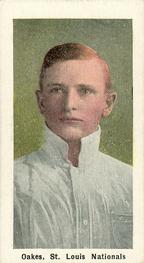September 19, 1911: Rebel Oakes’ single completes four-run ninth-inning comeback as Cardinals top Boston
 The Deadball Era (1901-1919) brings to mind low-scoring contests in which starting pitchers threw nine innings or more to bring home a win. But when Boston’s 1911 National League team1 took the field, the game often did not match that description. Boston surrendered 10 or more runs in 31 games and allowed 1,021 runs (6.5 per game) for the season, a total unmatched until 1929. Boston manager Fred Tenney summoned a relief pitcher 115 times during the season in a vain attempt to stop the carnage.
The Deadball Era (1901-1919) brings to mind low-scoring contests in which starting pitchers threw nine innings or more to bring home a win. But when Boston’s 1911 National League team1 took the field, the game often did not match that description. Boston surrendered 10 or more runs in 31 games and allowed 1,021 runs (6.5 per game) for the season, a total unmatched until 1929. Boston manager Fred Tenney summoned a relief pitcher 115 times during the season in a vain attempt to stop the carnage.
One of those high-scoring games occurred September 19 at League Park in St. Louis. Boston used three pitchers and the St. Louis Cardinals four,2 but as the St. Louis Globe-Democrat quipped, “[N]ot a single one could stop the bombardment of the opposing batsmen.”3 St. Louis center fielder Rebel Oakes ended things by slapping a two-out single in the ninth – knocking in the Cardinals’ fourth run of the inning – to give St. Louis a 13-12 win.
Boston (34-98) had dropped from pennant contention long before the game. It fell into eighth place on May 17 in the midst of a 14-game losing streak, and remained there, now 50½ games behind the NL-leading New York Giants. St. Louis had a winning record (70-63) and was mathematically in the pennant race, but sat in fifth place, 15 games behind New York with only 21 games to play.
St. Louis was hosting Boston for the final five games of their season series, but the teams were having trouble wrapping up the schedule. Boston won the first game of a doubleheader on September 17, but the second contest ended in a seven-inning tie. St. Louis took the first of two the next day, but the late game again ended tied. The teams agreed to another doubleheader for September 19, with two stipulations: The first game would begin at 1:00 P.M. rather than the usual doubleheader start of 1:30, and the umpires would “call off hostilities sharply at 3:45”4 so Boston could catch a train for Pittsburgh, where it was scheduled to play the next day.
The early start caught many fans by surprise. Fewer than 500 had arrived for the first pitch,5 although the crowd grew to an estimated 4,500. St. Louis started 23-year-old Roy Golden (4-9). Since joining the Cardinals in September 1910, Golden had problems throwing strikes. In 186 big-league innings, he had walked 161 batters. Boston countered with 29-year-old rookie Hub Perdue (6-8). In Perdue’s only other start against St. Louis, he was clobbered, yielding nine hits and eight runs in a losing effort.
Boston reached Golden for a hit and a walk in the first, but did not score. Perdue walked Lee Magee to begin the bottom of the inning, and with Oakes batting, Magee broke for second. Catcher Johnny Kling’s throwing error allowed Magee to reach third. Oakes – in his third NL season – singled to left, bringing home Magee with the game’s first run. Oakes stole second, and after Ed Konetchy struck out, Oakes scored on Denney Wilie’s double, giving the Cardinals a 2-0 advantage.
Boston scored in the second. After an out, Ed McDonald walked, and he raced for third when Kling slapped a single to left; Kling took second on left fielder Wilie’s throw to third. St. Louis manager Roger Bresnahan relieved Golden and summoned to the mound 19-year-old Pete Standridge – playing his first major-league game.
Standridge had recently completed his second season with Calgary in the Western Canada League. At age 18 in 1910, he fashioned an impressive 15-4 record; he followed that with 21-10 in 1911.6
Perdue was the first to face Standridge, and he grounded to Magee, who fired to third baseman Mike Mowrey, hoping to get Kling, while McDonald scored Boston’s first run. Kling retreated from third, was caught in a rundown, and was tagged out.
Boston took the lead in the third. With one out, Scotty Ingerton was hit by a pitch and Doc Miller doubled off the wall to place runners at second and third. Both runners came home on Jay Kirke’s single, putting Boston ahead, 3-2.
With one out in the fourth, Perdue doubled, and he scored on Al Bridwell’s single, stretching the lead to 4-2. Bridwell advanced to second on the throw home, only to be picked off by Standridge for the second out.
Boston’s Mike Donlin rekindled the rally with a single over second base.7 At that point umpire Hank O’Day ejected Tenney for being too vocal on the bench and failing to heed O’Day’s warnings. After Tenney’s long argument came to an end, Cardinals shortstop Arnold Hauser – the league leader that season in errors with 56 – fumbled Ingerton’s grounder, then compounded his problem by throwing wildly past first. While the ball rolled to the right-field pavilion, both Donlin and Ingerton ran around the bases, making it 6-2.
Boston continued its onslaught in the fifth. Ben Houser walked, and McDonald’s single moved him to third. McDonald stole second and Kling walked, loading the bases. Perdue punched a single to left, scoring both Houser and McDonald. Boston had scored in four consecutive innings and extended its lead to 8-2.
In the top of the sixth, right-hander Gene Dale, a lanky 22-year-old St. Louis native, made his major-league debut with his hometown team after compiling a 12-8 record in the Texas League. Kirke greeted Dale with a double to left, but he was stranded by a fly ball and two strikeouts.8
After finally holding Boston at bay, the Cardinals cut the deficit in the bottom of the sixth. Konetchy tripled to right-center with one out, and he scored when Wilie singled to right. Steve Evans grounded to first, unassisted, Wilie taking second. Wilie hustled home on Hauser’s single, and Hauser advanced to second on Perdue’s wild pitch.
When Mowrey beat out an infield single, Hauser went to third. Hauser then scored on a well-executed double steal. St. Louis still trailed, 8-5, but the sixth inning seemed to signal a change in fortunes.
Boston was blanked again in the seventh, and the Cardinals jumped ahead in their half of the frame. Dale started things with a single, sending Perdue to the clubhouse. Big Jeff Pfeffer, one of two Boston pitchers to manage a winning record (7-5) in 1911, took the mound to face Magee.
Magee grounded to Houser at first, who tried to force Dale at second. He threw wildly, allowing Dale to reach third, and Magee to reach second. Pfeffer fielded Oakes’s grounder, but Oakes beat his throw to first; Dale sprinted for home, and was thrown out, Pfeffer to Houser to Kling.
With runners at first and third, Konetchy’s single plated Magee, while Oakes took second. Wilie popped out on a bunt, but a single by Evans drove in Oakes. Hauser’s single scored Konetchy, making it 8-8, and Evans also scored on the play when Ingerson bobbled Hauser’s ball. St. Louis was ahead, 9-8.
Boston roared back with four in the eighth. Houser singled and McDonald reached on an error. Kling’s single to center plated Houser. Bill Sweeney, batting for Pfeffer, singled McDonald home to put Boston ahead, 10-9, and Kling scored Boston’s 11th run, and Sweeney reached second, “while the Cardinals threw the ball about the field trying to catch the men in a run up.”9 Bridwell singled Sweeney home, making it 12-9, Boston.
Ed Donnelly, a rookie at age 32, pitched a wobbly10 but scoreless eighth for Boston, assisted by a controversial call. O’Day called Magee out on a foul tip that, St. Louis manager Bresnahan maintained, bounced into Kling’s glove.>11 Bresnahan’s argument got him ejected.
Harry Camnitz retired Boston one-two-three in the ninth; Donnelly could not close out St. Louis. The first two Cardinals, Evans and Hauser, singled. Mowrey flied out and Ivey Wingo was out on a roller that pushed Evans to third and Hauser to second. The Cardinals had two runners in scoring position; Boston had two outs and a three-run lead.
A passed ball rolled far enough for Evans to dash home, making it 12-10, and Hauser took third on the play. Wally Smith batted for Camnitz and drew a walk. Miller Huggins ran for Smith and stole second – his 35th swipe. Huggins’s two-out gamble paid off when Magee singled Hauser and Huggins home, tying the game, 12-12.
Magee also stole second, and he sped home with the winning run when Oakes smacked his fourth hit, a single.12 St. Louis notched the win by overcoming deficits of 8-2 and 12-9.
Camnitz got the win – the only decision of his three-game career – by facing and retiring three batters.13 Donnelly took the loss in his major-league debut. He bounced back to join Pfeffer in posting a winning record (3-2) for Boston in 1911, pitching three complete games, including a shutout.
St. Louis cracked 21 hits; Boston, 17. The game featured nine walks, a hit batsman, five errors, two passed balls, eight stolen bases, at least two rundowns, and two ejections. The Globe-Democrat called the contest the most exciting of the season.
Because the game lasted 2 hours and 30 minutes, ending at 3:30, the second game was canceled.14 Boston caught the train for Pittsburgh.
Acknowledgments
This article was fact-checked by Kurt Blumenau and copy-edited by Len Levin.
Sources
In addition to the sources cited in the Notes, the author consulted Baseball-Reference.com and Retrosheet.org for pertinent statistical information. Play-by-play of the first 6½ innings appeared in the September 19, 1911, edition of the St. Louis Post-Dispatch. The author relied on game coverage in the St. Louis Globe-Democrat and Boston Globe, and reviewed SABR BioProject biographies for several players participating in the game.
https://www.retrosheet.org/boxesetc/1911/B009190SLN1911.htm
https://www.baseball-reference.com/boxes/SLN/SLN191109190.shtml
Notes
1 Boston’s team did not have an official nickname. Newspapers sometimes called them the Rustlers, an allusion to the team owner, William Hepburn Russell. I will refer to the team simply as Boston.
2 Boston’s 115 relief pitchers in 1911 set a National League record at the time. Bill James, Bill James Book of Baseball Managers: 1870 to Today, (New York: Scribner, 1997). St. Louis eclipsed that mark in 1912 by using a relief pitcher 134 times. The game has changed since then. In 2023 the Atlanta Braves called on a relief pitcher 532 times and the mound staff pitched only one complete game.
3 “Cardinals Capture Slugfest from Boston in Ninth Inning, 13-12,” St. Louis Globe-Democrat, September 20, 1911: 13.
4 “Cardinals Capture Slugfest from Boston in Ninth Inning, 13-12.”
5 “Recruit Pitchers Give Boston Team a Big Handicap,” St. Louis Post-Dispatch, September 19, 1911: 9.
6 The Cardinals obtained Standridge in the Rule 5 draft on September 1, 1911.
7 Donlin was sold to Boston on August 1 after sitting out in a contract dispute with the Giants.
8 Dale was banned from Organized Baseball in 1921 because of gambling allegations while pitching in the Pacific Coast League.
9 “Cardinals Capture Slugfest from Boston in Ninth Inning, 13-12.”
10 He allowed two hits and one walk, filling the bases.
11 “Cardinals Capture Slugfest from Boston in Ninth Inning, 13-12.” The Globe-Democrat reported this ejection but did not specify the inning in which it occurred. None of the other newspaper articles I read mentioned it. Based on Donnelly’s pitching line and the descriptions of Magee’s other at-bats, it had to have occurred in the eighth inning.
12 Oakes went 11-for-19 in the series and drove in six runs.
13 Camnitz’s older brother, Howie Camnitz, was 20-15 in 1911 with Pittsburgh, the second of his three 20-win seasons with the Pirates. Howie Camnitz totaled 133 wins in his career.
14 St. Louis won the season series 13 to 7. Three games ended in a tie.
Additional Stats
St. Louis Cardinals 13
Boston 12
Robison Field
St. Louis, MO
Box Score + PBP:
Corrections? Additions?
If you can help us improve this game story, contact us.

